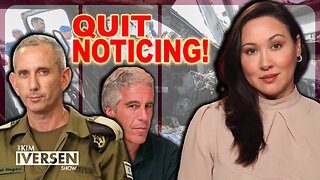Northern Kentucky Project: Observational Data During Second Visit of Bush Honeysuckle Removal
This video goes over some observations made during my second visit to a treatment parcel. The inital treatment was a fall treatment mechanical removal. Tool used was a brushsaw for branches, and to cut down the average sized bushes. A chainsaw was used to cut stumps larger than the brushsaw could handle and treated with Tordon RTU as a direct stump application.
Intial treatment was limited due to seed development already underway on mature shrubs, so speed at dropping was more important than complete removal.
Large stumps were recut to open fresh wood and treated with Tordon RTU in a conservative fashion along the outside ring/cambium using a smal 1.5" foam brush to prevent excess runoff contamination directly to soil. Majority of larger stems known to be treated were effective at killing plant, though some did show signs of resistance and survived. All bush honeysuckle resprouts shown major signs of struggle and it is unknown if this was due to trama incured during treatment, or if it is caused by lower light conditions and increased competition after being put through shock preventing healthy regeneration. Follow-up treatment methods were discussed and alternatives were given as potential rotation for a fall removal and spring retreatment schedule.
Future video will go over second plot which has a Spring initial treatment and heavy removal up front due to no pressure to drop mature trees because of late stage seed development encountered with a Fall to Spring treatment schedule.
-
 6:01
6:01
Vigilant News Network
14 hours agoTrump Faces Potential JAIL TIME Amid New Gag Order Threat | Beyond the Headlines
4.84K12 -
 3:09:19
3:09:19
SNEAKO
5 hours agoFIRST SNEAKO AND N3ON DESKTOP STREAM!
77.9K64 -
 4:36:57
4:36:57
Fresh and Fit
6 hours agoShare Emotions With Your Girl Or A Brick Wall? HEATED DEBATE!
93.1K66 -
 1:08:39
1:08:39
Man in America
14 hours agoSECRET CANCER CURE? What Big Pharma is HIDING From You w/ John Richardson
47.5K39 -
 1:03:39
1:03:39
My Mom's Basement with Robbie Fox
15 hours agoSTAR WARS IS BACK - THE ACOLYTE EPISODE 5 REACTION/REVIEW | MY MOM'S BASEMENT
42.9K20 -
 10:03
10:03
After Skool
27 days agoWhy Good People Comply With Evil - Daniel Schmachtenberger
59.3K67 -
 2:10:36
2:10:36
Nina Infinity
11 hours agoStar Wars Acolyte is CRINGE; Superman pictures & MORE | Infinite Talk
40.6K4 -
 54:40
54:40
LFA TV
22 hours agoThe CIA Is a Threat to American Democracy | Trumpet Daily 6.26.24 9pm EST
56.3K28 -
 1:09:14
1:09:14
Flyover Conservatives
13 hours agoANDY SCHECTMAN | The History of Currency, BRICS, US Policy… AND WHAT'S NEXT? | FOC Show
53.5K2 -
 1:42:58
1:42:58
Kim Iversen
9 hours agoMost Moral Military Is Most Dangerous For Aid Workers | Esptein Admitted To Being Mossad
82.2K69